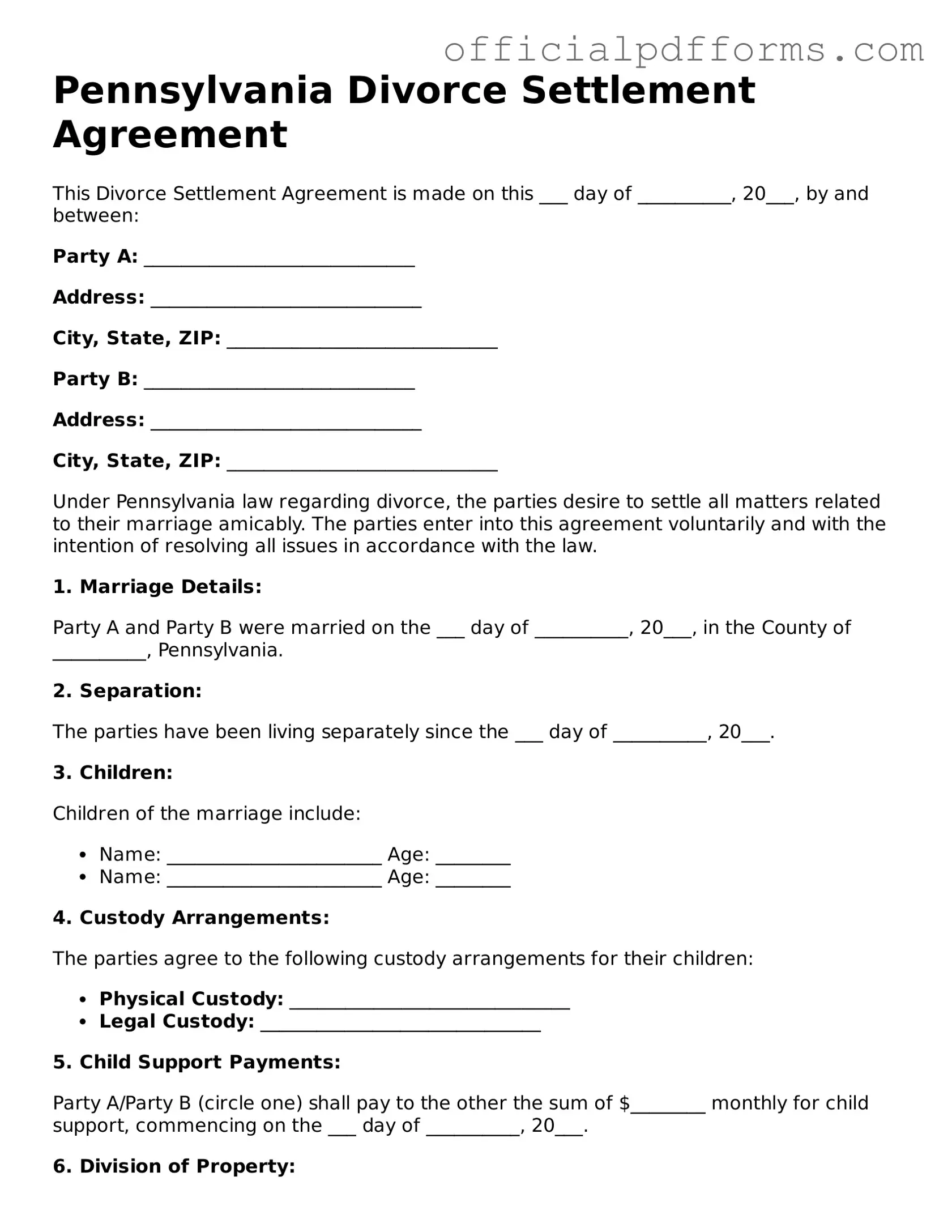What is a Pennsylvania Divorce Settlement Agreement?
A Pennsylvania Divorce Settlement Agreement is a legal document that outlines the terms of a divorce between two parties. It details the arrangements regarding property division, child custody, child support, and spousal support. This agreement serves to protect the interests of both parties and ensures that all aspects of the divorce are clearly defined and agreed upon.
This form is intended for couples who are seeking a divorce in Pennsylvania and have reached an agreement on the terms of their separation. It is suitable for both contested and uncontested divorces, although it is most commonly used in uncontested cases where both parties are in agreement on key issues.
What are the key components of the agreement?
The Divorce Settlement Agreement typically includes the following components:
-
Division of Assets:
Details how marital property and debts will be divided.
-
Child Custody:
Outlines custody arrangements, including physical and legal custody.
-
Child Support:
Specifies the amount and frequency of child support payments.
-
Spousal Support:
Addresses any alimony or spousal support obligations.
-
Other Provisions:
May include terms for health insurance, tax considerations, and any other relevant agreements.
How is the agreement enforced?
Once signed by both parties, the Divorce Settlement Agreement becomes a legally binding contract. If one party fails to comply with the terms, the other party can seek enforcement through the court. It is advisable to file the agreement with the court as part of the divorce proceedings to ensure its enforceability.
Can the agreement be modified after it is signed?
Yes, modifications can be made to the Divorce Settlement Agreement after it is signed, but both parties must agree to the changes. If circumstances change significantly, such as a change in income or living situation, the parties may negotiate a new agreement. Any modifications should be documented in writing and, ideally, submitted to the court for approval.
While it is possible to complete the Divorce Settlement Agreement without legal assistance, consulting with a lawyer is highly recommended. A legal professional can provide guidance on the implications of the agreement, ensure that all necessary terms are included, and help protect your rights throughout the divorce process.
